Australis
(Alternate Universe Solarium)
Return to Commonwealth Navy page:
The alternate universe of Solarium diverged from
the world as we know it during the period 1810-1850. The widest change is in the
Antipodes where the lands known in our world as Australia and New Zealand become
the Federated States of Australis. The general names of North and South Island
are changed to reflect some of the migrants that arrived in 1750-1800 from
Holland, Drenthe and Brabant respectively.
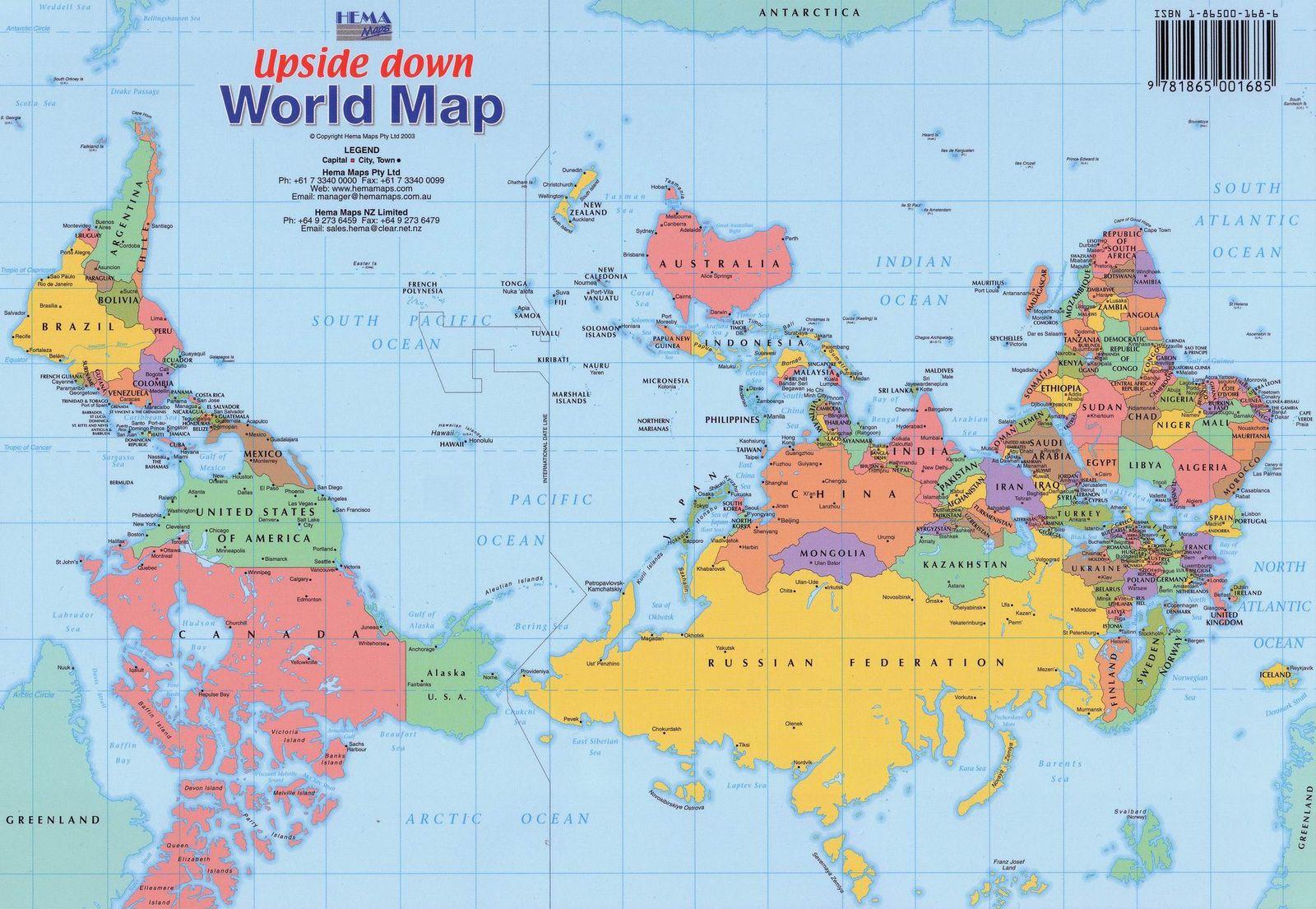
Looking at the world from this perspective, who is to say this is not correct?
It is only because the so-called Northern hemisphere astronomers drew the maps
first - they had to put themselves on top.
While Australis holds a mixed racial
population it is based on the European "White & Christian" peoples from mainly
the United Kingdom with pockets of Dutch, French, Germans, Italians, Spanish and
others. These peoples were sure of their ascendancy over the dark skinned races
and wars with the Aborigines and Maoris were inevitable and led to the virtual
genocide of both races. The lands that were opened up by this cleansing of the
land of the ungodly (only those 'heathens' that had converted and accepted
Christianity survived) were deeded to soldiers who had fought for the crown and
others who had proved themselves worthy of land grants in other ways. Early
settlers paid a premium to the Crown in Britain for land unseen until they
arrived after 3-5 months travel that not all survived. (I know its not very PC
but white supremacy was rampant during this time)
The idea of Australis is to turn what is now
"Australia and New Zealand" upside down and improve the place into a green and
growing nation, where many peoples can live. To do this requires a bit of give
and take with history (Alternate Universe) from about 1850 onwards.
It is the industrial revolution that has the ability to make Australia a great
nation within the Commonwealth. Britain had ensured that Australia would remain
'industrially' poor till after 1945 when Australia became its own self governed
country though gleams of this desire started showing in the 1920-30's, the 2nd
World War made it inevitable. While Australia has had the ability to become a
manufacturing power the rise of the "Cheap East" labour pool and lack of
oversight of the major corporations has meant that Australia has remained a
minor power though its government has an overinflated sense of its own self.
The power of people to help drive the industrial revolution can be seen
throughout those countries that were at the heart of the revolution, Britain and
its colonies were the greatest power in the world, resources poured into Britain
at an amazing rate with the results of the resources going back into the world
as manufactured products. We need to siphon off some of those production
facilities to Australia and to enlarge the Australian population in ways that
allow the new 'people and manufacturing power' to support each other.
Some of Englands greatest feats of engineering took place during this 1800-1900
period, the building of the Canal and railway networks (virtually by hand) being
two notable events that Australia needed to copy.
For Australia to become 'Australis' requires people, and these people need to
arrive in Australis during a time when 'sail' was still king so transporting
large numbers of people is difficuilt when the ships carrying capacity is still
small. From 1890 to 1910 it is far easier to do the same transport job with the
powered vessels then available.
The next question is where to get people from that will integrate into the
largely white/christian British based population. White and Christian are the
main requirements - language can be learned quickly enough - and these people
are available in what is then the Ottoman Empire and Balkan states. The Turks
come a close second (to Germany) when it comes to ethnic cleansing, the
Christians of the Ottoman Empire do not fare well with 2-3 million being killed
and expelled during the 1850-1930 timespan. Industry again fuelling this pogrom
as the minor peoples of the land began increasing at a faster rate placing
strains on the infrastructure. The Empiric way to cure this is to get rid of the
problem - goodbye Assyrians, Armenians, Circassians etc. The point is to get someone in that
region reporting to Australis that these events are beginning to happen and
Australis to do a deal with the Ottoman Empire and Russian Empires to transport all the people the
Turks wish to expel to Australis, where the people are used to fuel the growth
of the Australis infrastructure by getting water projects into place (dams,
canals, irrigation), laying the road and rail systems and helping the growth of
the manufacturing centers.
Coal and iron ore are the major requirements for the continued growth of
industry. Iron & Steel to build the machines and a lot of the infrastructure requires
it too.
Australis: being the central government of the confederated states of Australia
and New Zealand (which was retained tied to Australis past the 1840 Waitangi
date). This joint nation has access to lots of the resources required to fuel
their own industrial revolution (plus a few extras 'given' to them in this
universe). Iron sands of high quality abound down the West coast of North Island
and high quality coal from the West coast of South Island (oil and gas in the
future too) meant that NZ would remain tied to Australis. Shipping these
resources to UK was expensive - shipping the same resources accross the ditch to
Australia is no problem. Australia has its own coal, iron ore and (in the
future) oil/gas resources to make the Australis Industrial Revolution a reality.
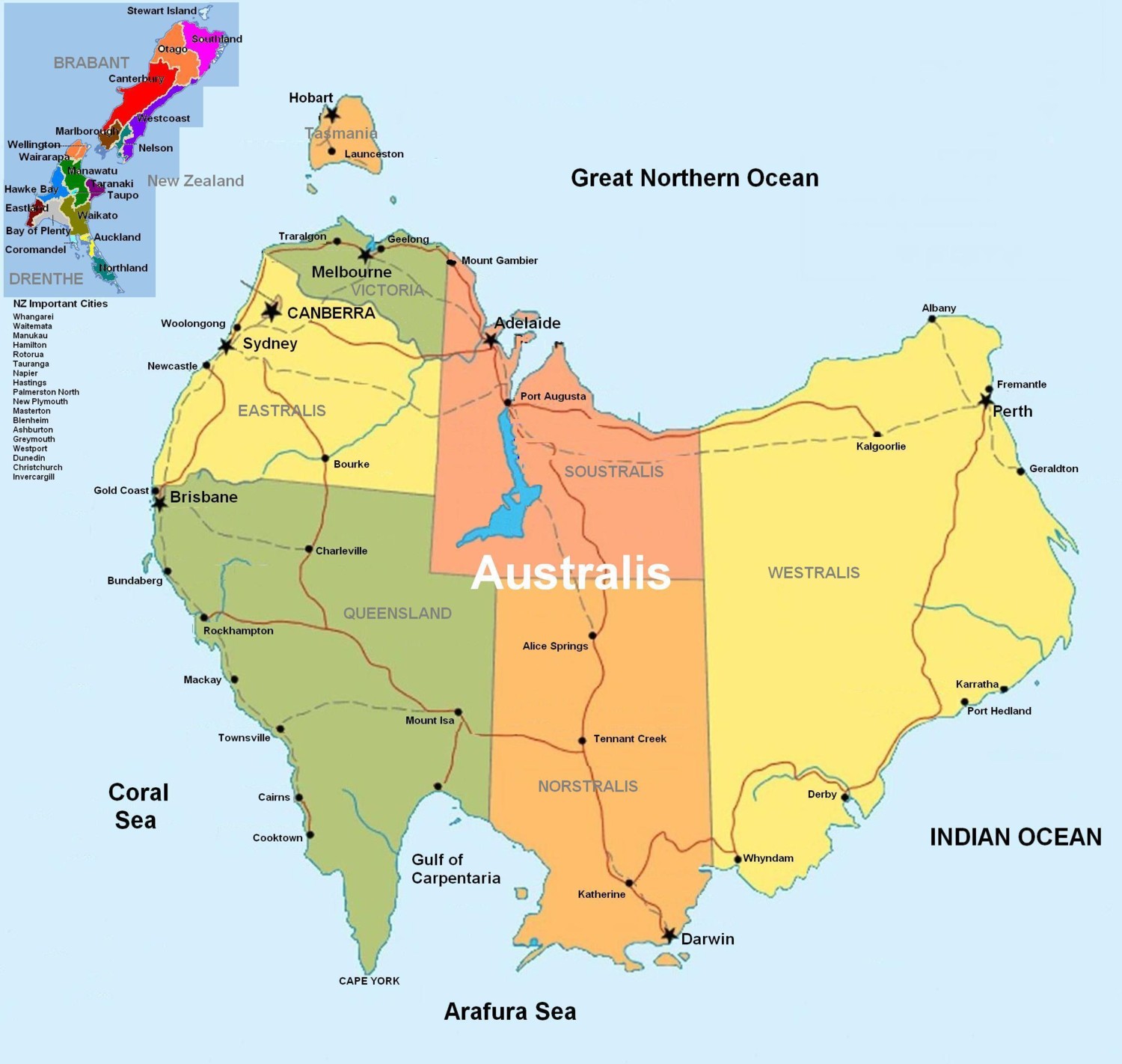
One of the problems is where to make the Industrial Revolution take place in
Australis and how to get the resources to where they are required.
The coal to fuel the revolution is along the East Coast of Australia and west
coast of Brabant (South Island). The major iron ore deposits are based in Western
Australia and South Australia. Other metals come from Mt Isa and the Broken Hill
region. The major sources to export to in the 1850-1910 timespan are Europe and
the US. Though if the products are available to the Eastern nations (Japan,
China etc) at a rate favourable to them, those markets would also be available
for manufactured goods.
Where, that is the major problem - Darwin would be ideal but is not that
agreeable in climate and surrounding areas untill medicine is available to cure
its problems. Darwin has a magnificent harbour and is one of the prime
Naval bases.
Having to send the resources a long way to process them lowers their value with
every mile they travel. Then to turn around and send the product to another
point for either further processing or export further reduces the value. Because
of the vastness of Australia their need to be at least 4 processing points for
the basic resources. Auckland, Perth, Adelaide and Sydney.
Where you have land access to all the points you wish to travel to then rail
travel is the link of choice with sea links and eventually air links.
1869 with the opening of the Suez canal and the opening of the southern European
nations to Australis travel and sales markets for food is the time when
Australis' population jumps significantly: 1850 = 800,000 / 1870 = 2.4mil / 1880
= 4.5mil / 1890 = 7mil / 1900 = 11mil / 1910 = 16.5mil. The ships leave
Australis with produce and return with immigants.
Several things fuelled this growth - the enforced migrations as noted above
(6mil 1850 to 1910) the gold rush era and the normal migration of people from
(southern) Europe to the new promised land.
To make this work the enforced migrants have to do a 5 year bond of employment
to the government to pay for their transportation and their eventual deed of
ownership of the land they help clear and access. This gives the government a
workforce of at least 1/2 million a year to build the infrastructure required to
get ahead of the population curve. Water Water Water, that is what drives how
fast an area can grow. The capture and retention of water and funelling it where
it needs to go is paramount. During the same period the building of the road
& rail networks between points of manufacturing and processing is also
undertaken.
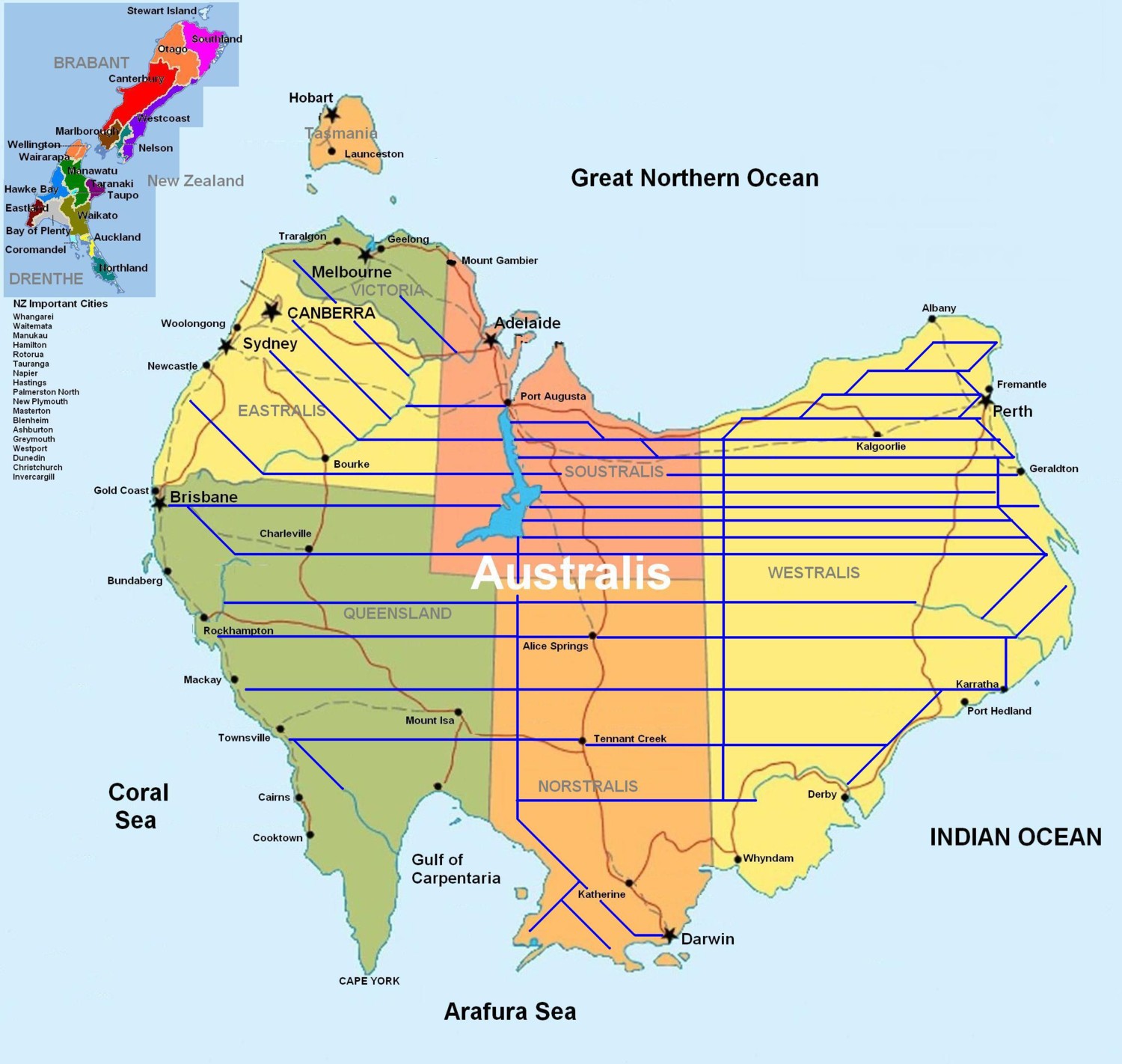
The way to future growth of Australis is the reclaiming of the semi-desert
regions. Again it is the rail/road water infrastructure that is needed to do
this. The carrot to the people to do this is the ownership of the land.
Smallholdings growing food to feed those on the land with an excess for sale
gives more and more advancement of population growth. Farms/farmers produce
large families with greater growth. The excess children of working age fuel the
city/urban population growths. It becomes exponential.
Once the canal, road & rail systems are in
place and finished with dams and manmade lakes at strategic positions to feed
the canal system the people used to produce these modern wonders start fueling
the population in family growth and using the manufactured goods made in
Australis, eat the food produced throughout Australis. One of the very first set
of learning institutions produced was a set of universities offering 'medical'
training in both Doctor, Nurse categories. The need for medical people at the
canal/railheads was forseen and imports with carrots were first used untill the
university system could produce enough of its own. The roads and rail system would have been pushed through at
the same time as the canals and all 3 would have been dug out and laid at the
same time. The land being opened up at the 'head' of the system as it moved on.
The dams would be fitted as hydro-electric production centers, feeding an ever
growing need for electrical power. New Zealand being further north of
Australia does not require the same amount of resources to create a verdant land
with plenty of rivers and lakes to provide the necessary water resources for
population, infrastructure & economic development. New Zealands
population increased at the same sort of rates as the Aussie half of Australis
with population reaching 3 million in 1910, the same indenture system operated
for New Zealand for creating the dams and hydro systems required for the growth
of industry in mainly the south Drenthe region.
A double tracked rail link would need to be
created between Sydney to Adelaide, Adelaide to Perth and Adelaide to Darwin.
This link system would carry the vast amounts of resources and products to each
center while Perth and Sydney were the main export centers. In New Zealand the
two main centers (equivalent to the Australian State capitals) were Auckland
(for Drenthe) and Christchurch (for Brabant). Auckland being the manufacturing
and production center while Christchurch handled the prime foodstuff production.
Though the sooner Darwin can be brought into a full working harbour and export
port the better as Darwin is closer to the main Eastern markets and is also the
linchpin for the defence of northern Australia. Norstralis benefits from the
canal system majorly with the fresh water brought to the area supplanting the
swamps and marshes eradicating the fever problem, which was also helped with
preventive medications becoming available, such as manufactured quinine.
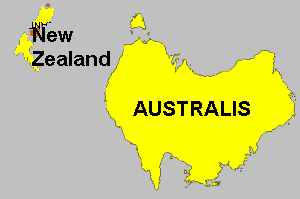
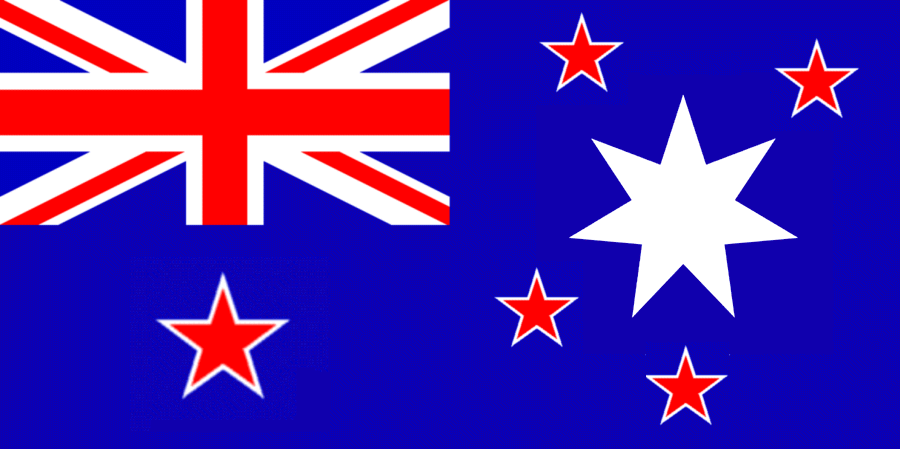
Distance 1200 miles NZ to Australis.
Australis Flag.
Please note: all of the
outcomes of this alternate reality are drawn directly from my imagination and
are not to be taken seriously, though parts of this are drawn from reality to
create the historical start point.
All of the outcomes are to fuel my
imagination of what 'Australis' may produce for a navy leading up to and into
the second world war. It is entirely probable that the ships would be designs
produced for not only the Royal Navy but also The Australis and South African navies.
Why spend money on designing your own when you can copy someone elses', as long
as the design suits what you want. I figure that even with Australis
participating fully in the Industrial revolution, its shipbuilding industry
would still be limited with material and ships themselves still being sourced
from Britain, untill such time as the necessary experience had been gained.
With many designs from the First World War enduring to take part in the Second
World War it is nice to see what these ships may have looked like with a 1930's
rebuild.
The two major shipbuilding areas are
Newcastle and Adelaide. Major ports with large docking facilities are Darwin,
Perth, Adelaide, Melbourne, Sydney, Newcastle, Brisbane, Auckland, and
Christchurch. Other large seaside centers have various infrastructure to
support naval vessels. Sydney does have a Navy dockyard which while it is
capable of building ships it is mainly used for refit and repair till the later
1930's when it is also used for the rebuilding program of the old ships.
Timeline of the Australis Navy
1850-1900
The Navy building yards were established in Newcastle in 1856 and the
Adelaide yard in 1871. Both yards started building minor vessels for the
Australis Navy that were mainly in the coast defence style and merchant vessels
for the Government. The largest
vessels completed during this time are the 36 transport ships for the Government
for use in bringing immigrants from Southern Europe and the Middle East areas to Australis while transporting goods to those markets. This period is a learning
curve for the yards, gaining in experience with each ship. The first powered,
iron ships are built in the 1870's and soon take over the migrant trade route.
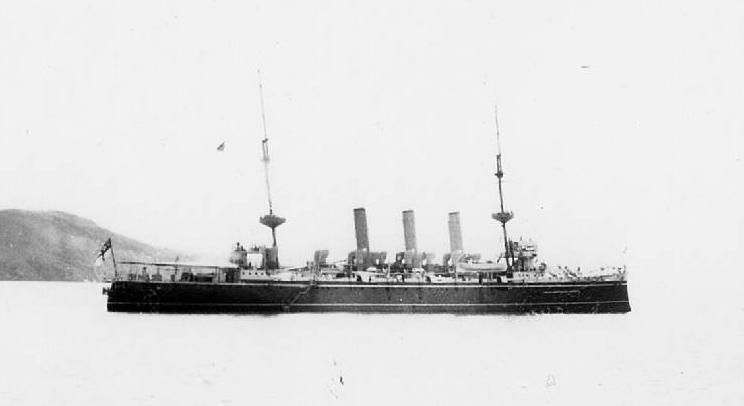
1901-1914
The first large Naval ships arrived in Australis waters during this period - 1905.
The ex-Chilean Battleships bought from the British builders to stop them falling
into unfriendly hands were not to Royal Navy standard so were transferred to
Australis. The original names (Swiftsure & Triumph) were changed to Otago and
Tasmania to reflect their new owners. Otago was discarded and stripped in 1918-19 while Tasmania
was sunk by a U-Boat in 1915. They were accompanied by two Armoured Cruisers of
the County class, as both types of ship had the 7.5" gun, to keep the ammunition
supply at a reasonable level. Original thoughts of using the names Australis and
New Zealand for the new battleships were quashed when the Navy told the
government that they would be designing and building bigger and better ships in
the near future. It was during this period that the Australis large caliber gun
foundry was started in Adelaide with a medium gun foundry in Newcastle.
Plans for the new Dreadnought vessels were brought out to Australis with the new
ships but the yards were not quite ready for that size of ship. The largest
ships built so far were two protected cruisers with 6" armaments for trade
protection and these ships were in continuous use (as much as training ships) on the Perth to Red Sea trade
route. In 1905 the Navy yards laid down two more cruisers of an enlarged County
type to be armed with 8 x 7.5" guns in a lozenge arrangement. These ships were
similar to the British Duke and Warrior classes. These ships were followed in
1908 with two Neptune type Battleships and two Indefatigable type Battlecruisers
both with 12" main armaments. Another battlecruiser was started in 1910 in the
Tiger class type with the first 13.5" guns and was followed in 1911-1912 by 2 more
battleships in the Iron Duke type. 1913 saw the introduction of the 15" gun with Australis having received plans for both the R Type and Queen Type battleships.
Australis chose the Queen type and laid down 3. The last ship laid down during
this capital ship building phase was the battlecruiser of the R class laid down
in 1915. This ship differed from its UK counterparts as it was to be armed with
the 14" guns from the incomplete Chilean battleship that was completed as the
Aircraft Carrier Eagle. Various cruisers were also laid down and completed
during this time with 4 Bristol class and 4 Boadicea class being laid down
1906-1909 then a further 6 Chatham class were laid down in 1910-11. Destroyers
had not featured greatly in Australis thinking as the range of these ships was
to short to make them more than harbour protection vessels. It wasnt until 1910
that the first full destroyers were laid down of the 'I' class and these were
followed in 1912/13 by 'L' class vessels.
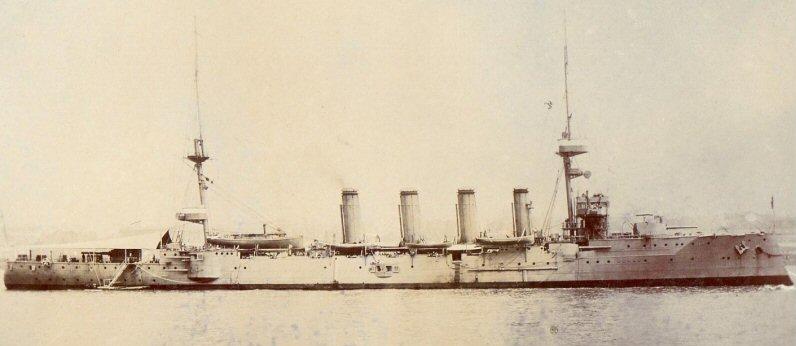
1914-19 - World War 1
Wartime construction completed those capital ships already building and the
only new ship was the battlecruiser laid down in 1915 as noted above. Otherwise
new construction centered on cruisers, destroyers, and minesweeper / escort
type vessels. Cruisers were of the C type then E type followed by a new Armoured
cruiser type. Destroyers followed the UK types with R & S types, VW in normal
destroyers with Marksman Class leaders being built for the RS types and then the
Admiralty type Leader class ships to go with the VW type ships. Minesweepers and
escorts were all of the Hunt type which started being laid down in 1914 and
laying down of these vessels stopped in 1917 when victory became apparent. The
Hunt type vessels were built in mainly commercial yards to free the Navy yards
for major construction and repairs and the finish of the Hunt class varied
greatly. Some were of shoddy construction and lasted only a few years in
service. All had been discarded by the start of WW2.
1920-1939 The Inter-War Years
Because of its navies size and its links to Great Britain, Australis was made
a signatory of the Washington Treaty with limits similar to France, Italy and
Japan. With the completion of the Australis battlecruiser in 1919, Australis'
limits were reached. No further capital ships could be built prior to 1930 when
Australis was allowed to lay down 2 new ships to replace the old Neptunes. The
immediate after-war period was filled with the completion of the ships laid down
during the war and as yet uncompleted. 2 E Type cruisers and 2 armoured cruisers
fell into this category along with several destroyers. New construction centered
on cruisers with first the County types then the new generations of light
cruiser. Destroyer construction followed British types with the A-I classes
being built during 1928-1936. Early ships started being taken in hand in 1934
for modernisation and reconstruction. Some ships had had refits earlier but
these were more just keeping the ships up to date. 1934-35 plans for
reconstruction of the battleships, cruisers and dextroyers completed prior to
1920 came into being with the entry into the armoury of the twin 4.5"
dual-purpose turret in below deck and free standing mountings. The same gun
system was also to be incorporated into secondary armaments for cruisers and
battleships while the destroyers would use the freestanding turret as a main
armament. With the "Great Depression" still in force Australis only undertook
the design of its new battleships. It was not untill 1933 that the first ship
was laid down with a sistership in 1935. New escorts to replace the Hunt type
started building in 1931 and continued right through to 1944 with the same basic
design. The I class destroyers were discarded in 1919-20 and the L's had
been discarded on completion of the new A-I types. The old R&S type destroyers
started being replaced by ships laid down from 1934 onwards. The first few R&S
ships which were completely worn out were sold or discarded/scrapped the better
ships were kept and renovated into destroyer escorts with more either
anti-submarine or anti-aircraft fittings. New guns and turrets were entering the
armoury lists on a regular basis from 1934 onwards, mostly in the Dual-purpose
and anti-aircraft range as aircraft showed that they were a force to be reckoned
with. Aircraft carrier construction was something that the Australis navy was
happy to plan for and build when able. During the period that 2 battleships and
a battlecruiser were laid down, 8 aircraft carriers of various types and sizes were also laid down.
The aircraft carriers were made possible because of the setting up of the
Commonwealth Aircraft Corporation in 1917 in Melbourne that would produce its
own aircraft types and produce UK designs under license. Thus when a new
aircraft carrier was being built or converted, an order for aircraft
complemement and spares could be ordered through the CAC to be ready for
completion of the aircraft carrier.
The period 1930-34 was the interesting area as the London Naval Conference
was convened in 1930 in the middle of the Great Depression with Britain calling
for even greater restrictions than those already in force. Pushing for 26,000
tons and 12" for battleships, with cruisers to 8,000 tons and 6", this would
have helped Britain as they most needed numbers of ships rather than big ships.
Japan said 'No' and the US said maybe and with that, those limits never made it.
Japan also said it would not be under treaty limits any more as it was going to
build new ships. The US of course could not allow the Japanese to build ships
without answer. Japan however did indicate that they would act in the spirit of
the Washington limits. This is quite interesting as the Japanese designers had
been told to think 'maximum' sizes which lead to the Yamato type at 65,000 tons
standard displacement. America stated that if Japan had not ratified the
Washington limits as redefined in London by 1932 they would no longer be under
any obligation either. The Japanese didnt sign and the next arms race was on.
1939-45 World War 2
Again as with the First World War, once war was declared only those capital
ships that were building were to be completed. It was not until 1940 that more
Aircraft carriers of several different types were laid down. Construction had
centered on cruisers, destroyers and escorts. Rather than design new ships for
the escorts, the new Escorts and Frigates classes that had been started in the
1930's were kept with and numbers were increased markedly. Cruisers were in two
types with an anti-aircraft type and a general purpose light cruiser with 6"
guns. A destroyer type of the Modified A-G types was used as the basis for a War
Emergency design. It was found, very quickly. that specialised Fleet
Replenishment Ships were required for support of the battlefleet. Two types, an
oiler and a dry stores ship were designed and built in numbers. Room had to be
found for enlarged AA weapons outfits, radar, asdic all got better and required
more space not just for the equipment but also for the crew to use them. Ships
got bigger while the armament remained the same. The guns fired faster. The
older ships performed well against their more modern counterparts with many
battles being won by ships that had probably only just escaped the scrap yard.
Return To Top Of Page






